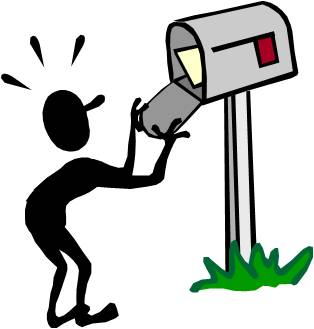Entries Tagged 'copywriting tips' ↓
March 11th, 2015 — blogging for business, Content marketing, Content writer, copywriting tips
This blog first appeared on Briar Copywriting‘s blog.
I have never encouraged anyone to write about his or her own business.
The quality of the marketing collateral you produce is key to your business’s success.
I know you’re sitting there reading this thinking yeah, right. You would say that, you’re a copywriter. Granted, that’s partly the reason because if I encouraged you all to write your own stuff I’d be out of a job, but that’s only a teeny-weeny part of my motivation.
Something strange happens when you run a business – you become knowledgeable. After a while you have come across just about every scenario you can think of, the information you have amassed is stifling your objectivity and you start to communicate less effectively.
No, really, you do.
Because everything about your business is like second nature to you, you begin to assume a certain level of knowledge in your audience.
As a result you start answering questions your customers don’t want to know about and you find it impossible to effectively and clearly respond to their genuine questions because you automatically assume they have a greater understanding than they really do.
Just think about it; how many times has your kid come to you asking for help with their homework? They’ve told you want they’re studying and the question they need to answer, but because you have a higher level of knowledge than them, you immediately launch into an answer that brings in all sorts of other facts that they haven’t even learnt yet leaving them more confused than before.
The same thing happens when you try to write your marketing materials. Rather than starting at the base level and building on knowledge, you immediately launch in to a complex and convoluted answer that just confuses.
Because it’s hard for you to believe that someone else doesn’t have the same knowledge level as you, you become a hopeless communicator. It happens to everyone, no matter what field they are in.
Overcoming your knowledge block
The main problem with your knowledge block is that once the information is in your head you can’t get rid of it. You can’t suddenly decide to “unknow” stuff, so you have to find a way to suppress your knowledge.
For some that’s like dumbing down what they know, but it’s not. It’s an effective way of clearly getting your message across to your audience.
When first meeting with a new client, I always tell them to treat me like a customer – they mustn’t assume I know anything. In fact, even if I’ve written for the same industry before my knowledge level is zero because I don’t know their business.
Even then I usually end up stopping them and asking them to clarify something because they’ve used a term or language that’s confusing or assumes a certain level of knowledge that neither I nor their customer has.
The best way to avoid this trap is to get someone else (a professional copywriter) to create your copy for you. But if you insist on doing it yourself make sure you follow these steps:
- Write down what you want to say
- Review it to make sure it is aimed at your customer, highlighting benefits, and not about you and your company
- Review it again and simplify the language and remove any jargon
- Get someone not connected with your business to read it to see if they understand what you’re saying and whether it would make them buy/get in touch etc.
- If the answer is no, go back to the drawing board and start again
- Keep going until you write something that’s simple, clear, engaging and compelling
Despite what you may think, writing marketing copy is not easy. If it were copywriters, like me, wouldn’t exist.
March 4th, 2015 — Building a business, Content marketing, Content writer, copywriting tips
The UK is the 1st country to spend more than half of it’s Ad spend on digital.
GroupM carried out the research, which showed that in 2015, £1 or very £2 spent on advertising will go to digital online media.
Apparently, it can be directly linked to our smartphone culture. According to Adam Smith of GroupM:
“The British are the most enthusiastic online shoppers in the world in terms of spend per head. And there has always been a high level of credit and debit card use [online]. On top of that Britons have rapidly embraced smartphone and tablet use, all of which has fuelled where advertisers spend their money.”
How will this affect your business?
With more and more people using mobile technology for shopping, it’s essential you have a responsive web presence that works across all devices.
Plus, your online content has to be red hot.
How do you do that?
- Your website must be focused on your customers
- Benefits and USPs must be highlighted
- You must offer a simple buying process
Above all, your content marketing must be your top priority.
People will only find you if you deliver consistently high quality content that’s focused on your customers’ needs.
Why?
Your customers are interested in getting the best for themselves. They’re not interested in you, only what you can do for them.
That ‘s why it’s essential you separate yourself from your business when writing. Your articles aren’t sale pitches; they should be informative, relevant and be beneficial to your reader.
In simple terms, to make sure your business stays one step ahead:
- Invest in making your digital marketing as strong as possible
- Make sure everything is written for your customer
Sally Ormond, Briar Copywriting
February 4th, 2015 — Branding, copywriter, copywriting tips, Copywriting tone

What is a brand voice?
Basically, it’s the way your brand sounds to your readers.
That’s as clear as mud.
OK, look at it this way. When it comes to branding, the look, feel and words that you use have to work together to create an overall impression.
You probably have a pretty good idea of how you want your audience to see you. It could be as a high end brand, one that is innovative (Apple springs to mind) etc.
So where do words come into it?
Well, they have to paint a picture that is in line with your imagery, but there is one very important thing to remember.
What is it?
Your customer.
Even though you know how you want to be perceived, it’s just as important to understand how you want your customer to feel.
You may have lofty ideas of the type of language you want to use, but is it going to be right for your audience?
Think about who they are, why they would be interested in what you’re offering and what’s important to them. When you know that, you can tailor your writing to show them how you’re going to help them live the life they want to live.
It’s also important, especially when branding for a high end product, to show them why it’s so good. That doesn’t mean justifying the price tag, but rather highlighting the benefits it will bring:
- A sign of discernment
- Professional image
- Improve performance
It is the words that you use that will evoke an emotional connection to your brand. They will show your audience that your values are the same as their values and that by supporting your brand they are showing the world they are aligned with what you stand for.
Author – Sally Ormond, Briar Copywriting Ltd
January 28th, 2015 — copywriting, copywriting tips, Copywriting tone

Every copywriter in the land loves creating content.
Every copywriter in the land hates the editing process.
It’s very easy to be objective with someone else’s writing, but when it comes to your own taking a red pen to it can be like severing a limb.
The problem is every piece of content you generate will need editing. If you don’t edit you’ll never turn your good content into great content.
So where do you start?
The long and the short of it
When you start on a project, just write. It doesn’t matter how bad it is, write everything you can think of because it’s much easier to cut during your edit than add.
Once you’ve finished the editing process all the phrases and sentences that made you cringe will be gone, leaving you with the most powerful words.
Be strict
All writers are guilty of having a favourite phrase, sentence etc., in their writing. It may be something that came to you in a flash of genius that you just had to get into the piece you’re writing, but does it add or detract from what you’re trying to achieve?
During your edit you have to be ruthless. Keep the focus of your writing in your mind at all times and if it doesn’t fit it’s got to go.
That is especially true for the start of your content. Most writers will spend the first paragraph warming up. Take a look at the beginning and think is that the right starting place or is there a better introduction a few sentences in? It’s important to make an impact from the outset rather than gently leading the reader by the hand, because they may let go and find something more interesting to look at.
Think about your words
The easiest writing to read and understand is that which uses simple words, short sentences and short paragraphs. When you’re trying to sell, your writing has to be snappy, concise and to the point. That also means keeping your punctuation under control. Numerous commas in a sentence slows the pace and can lose a reader, oh and never, ever finish a headline with a full stop because you’re asking the reader to stop, and that’s the last thing you want them to do.
Voice
The tone of voice in a piece of writing refers to how it sounds when it’s read aloud.
Copywriters are in an odd position; the are the writers, but the message is coming from their client. Therefore the tone they adopt must fit with the company and it must also appeal to the audience.
As you edit, think about who you’re writing for, the types of phrase they would use, how they want their customers to see them and make sure you use the right tone and language to reflect their personality.
Be active
The use of active verbs can breathe life into any piece of writing, so take a good look through what you’ve written and make sure you change any areas of passivity to active-go-getting-ness.
Whichever way you look at it editing is painful, but at the end of the process you’ll be left with content that’s powerful, engaging and that will drive results.
December 10th, 2014 — copywriting tips, Sales Letters, sales writing

Sales letters are still widely used despite the growing popularity of email marketing.
In some cases a letter can make more of an impact because people are becoming immune to emails and are more likely to delete it if it doesn’t immediately pique their interest.
Snail mail may be old hat, but there’s still something comforting about receiving a letter, something that makes us want to open it (especially if it comes in a hand addressed envelope).
I would love to tell you that this blog contains a free template for the most successful sales letter on the planet, but in truth there are too many variables for their to be a “one size fits all” template, such as:
- The audience you are addressing
- What they’re doing and how they are feeling when they get your letter
- The offer you are making
- What the weather is like
- How their journey into work went
I could list more, but you’re getting the picture.
Having said there is no winning formula, there are a few things you can do.
1. Grab their attention
This shouldn’t need to be said as it’s true for all your marketing.
You have to grab their attention the minute they open your letter. That means a compelling headline and an awesome first line.
Make sure you draw attention to the benefits they’ll get if they do business with you and always go for clarity over creativity.
2. Problem and solution
This format always works well.
Your product/service is going to solve their problem, you just have to make sure you convince them of that.
There’s no need to lead them in gently, get straight to the point and empathise with them.
3. Benefits
The benefits must always be the focus of your letter.
Your reader wants to know how you’re going to help them so make sure you tell them. Everything you say about what you’re selling must be related back to your reader – how it will save them time, money, make them more successful etc.
4. Offer
People always opt for offers over purchases.
If you need glasses you’ll always go for a 2 for 1 offer, so make sure you offer a great deal and emphasis it.
5. Guarantee
One of the easiest ways to over come cold feet when you’re trying to sell to someone is to offer them a cast iron guarantee. If they know they can come back to you if they change their mind, they’re far more likely to take the plunge and buy.
6. Tell them what to do
If you do all the hard work listed above. but forget to tell them how to buy, you’ve just shot yourself in the foot.
Make the buying process as simple as possible and offer several different ways to buy – by email, phone or by using a reply card and stamp addressed envelope.
This may not have been the template you were hoping for, but it’s as close as you’ll get to one.
All you have to do is make sure each one of the elements above are included in your letter if you want to give it the best possible chance for success. Another tip is to follow it up with a phone call (depending on the size of your mailing).







